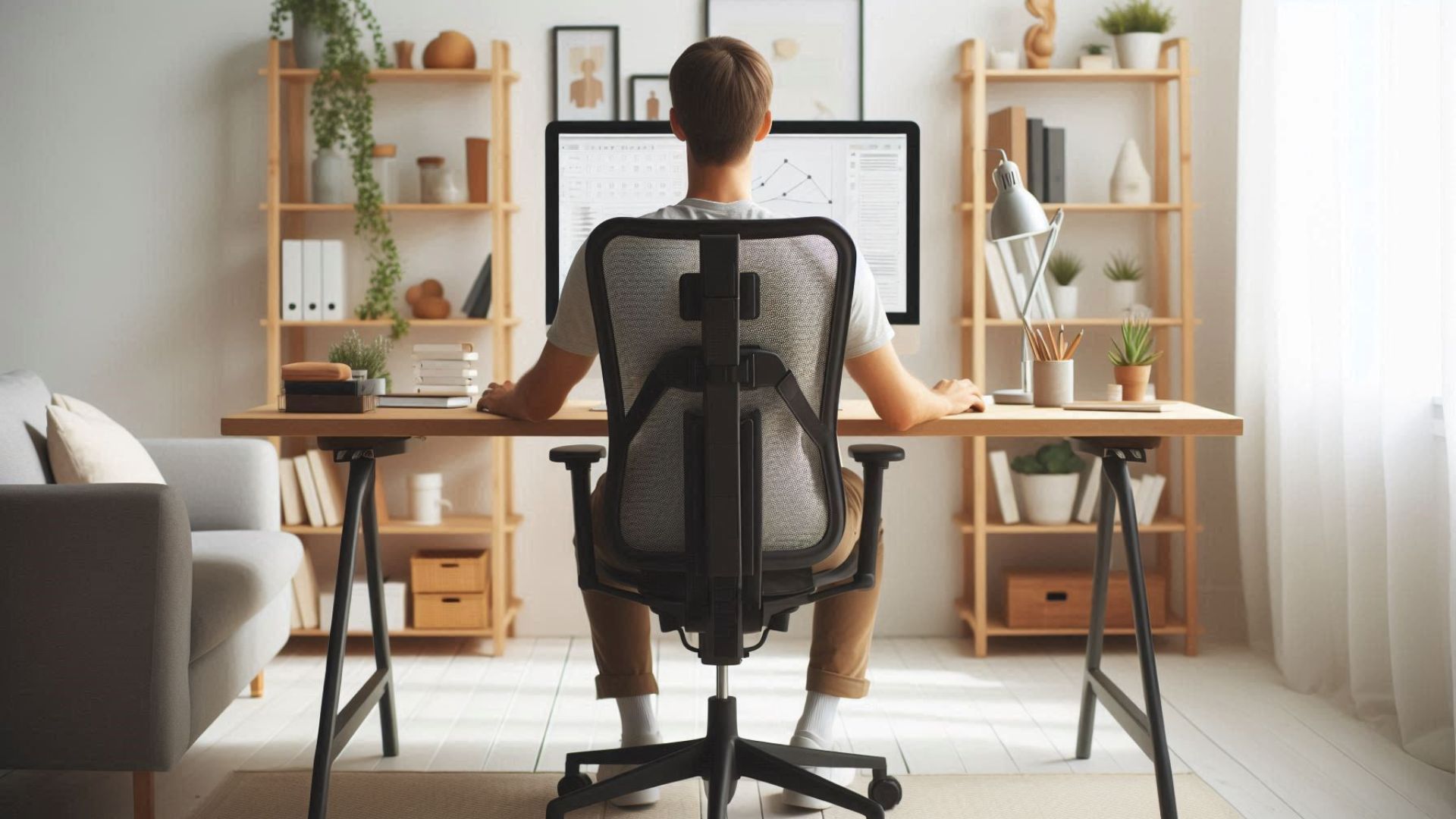Neck pain is more common than ever, thanks to hours spent staring at phones and working on computers. If you’ve ever felt stiffness or tension in your neck, you’re not alone.
While you can’t always avoid neck pain completely, there are ways to reduce your risk. Aurora Health Care spine specialists can help you prevent or treat neck pain so you can get back to enjoying life—pain-free.
Simple Ways to Prevent Neck Pain
You might not have full control over whether you develop neck pain, but small lifestyle changes can make a big difference.

Set Up an Ergonomic Workspace
A poorly designed workspace is one of the biggest causes of neck pain. If you work at a desk or spend a lot of time on a laptop, you might be putting unnecessary strain on your neck.
Here’s how to make your setup more comfortable:
- Adjust your desk height so your forearms are parallel to the floor when typing.
- Use a chair that lets your feet rest flat on the ground while keeping your thighs parallel to the floor.
- Position your screen so your eyes naturally land in the top third of the display.

Also Read: How do I Choose an Ergonomic Chair for Lower Back Support?
Prevent “Tech Neck”
Constantly looking down at your phone isn’t just bad manners—it’s also tough on your neck. Over time, this strain can damage your discs, joints, and ligaments. This issue is so common that doctors call it “tech neck.”
Dr. Brian Konowalchuk, an occupational medicine doctor at Aurora BayCare Medical Center, says, “We’re seeing more and more patients with severe neck pain from constantly looking down at their phones. If you’re feeling discomfort in your neck, shoulders, or upper back after using your device, it’s a sign to make a change.”
To prevent tech neck:
- Hold your phone or tablet at eye level.
- Prop your device on a pillow to reduce the strain on your neck.
- Set reminders to take breaks from your phone.
- Cut back on texting time.
Improve Your Posture
Whether you’re sitting at your desk, using your phone, or running errands, your posture plays a big role in neck pain. Every inch your head moves forward adds about 10 pounds of pressure on your neck muscles. Over time, this can cause chronic discomfort.
To improve your posture:
- Relax your shoulders away from your ears.
- Gently engage your core muscles.
- Keep your head in line with your body.
- Lift your chest slightly to help straighten your spine.

Also Read: How can Posture Correction Improve Overall Ergonomics?
Lifestyle Changes for Better Neck Health
Your daily habits also affect your neck. Many neck problems happen because the spongy discs between your spinal bones wear down. Staying active and taking care of your body can help keep your discs healthy.

Stay Active
Regular exercise strengthens your muscles, improves circulation, and lowers your risk of injuries. A strong back helps support good posture, keeping your head in proper alignment.
Quit Smoking
Smoking restricts blood flow and speeds up disc degeneration, making neck pain worse. If you’re struggling to quit, talk to your doctor about smoking cessation programs or other resources.
Drink More Water
Your spinal discs are mostly water, so staying hydrated is key to keeping them healthy. Most people need around 64 ounces of water daily, but your needs might vary based on your body size, activity level, and climate.
If you have trouble drinking enough water, try setting hourly reminders or tracking your intake. While tea and low-sugar juices can help with hydration, watch out for excess sugar and caffeine, which can have a dehydrating effect.
Choosing the Right Pillow for Neck Pain
There’s no single “best” pillow for neck pain, but the wrong one can definitely make it worse. Here are some tips for finding a pillow that supports your neck:

- Try memory foam: It molds to the shape of your spine for better support.
- Use a travel pillow: This helps keep your neck supported when you’re on the go.
- Pick a flatter pillow: It keeps your head aligned with your spine.
- Replace pillows regularly: Swap out old pillows every 1-2 years.
How you position your pillow also matters. If you sleep on your side, place a pillow between your neck and shoulder for support. If you sleep on your back, putting a pillow under your thighs can help maintain proper spinal alignment.

Also Read: What Affordable Ergonomic Products are Best for Home Use?
Best (and Worst) Sleep Positions for Neck Pain
Best: Sleeping on your back is usually the best position for your neck since it takes the most weight off your spine. If you have neck pain, sleeping at a slight incline or placing a pillow under each arm may help reduce tension.
Worst: Sleeping on your stomach is the hardest on your neck because it forces you to twist your head to the side while arching your back. If you’re a stomach sleeper, consider switching to a different position to ease neck strain.




